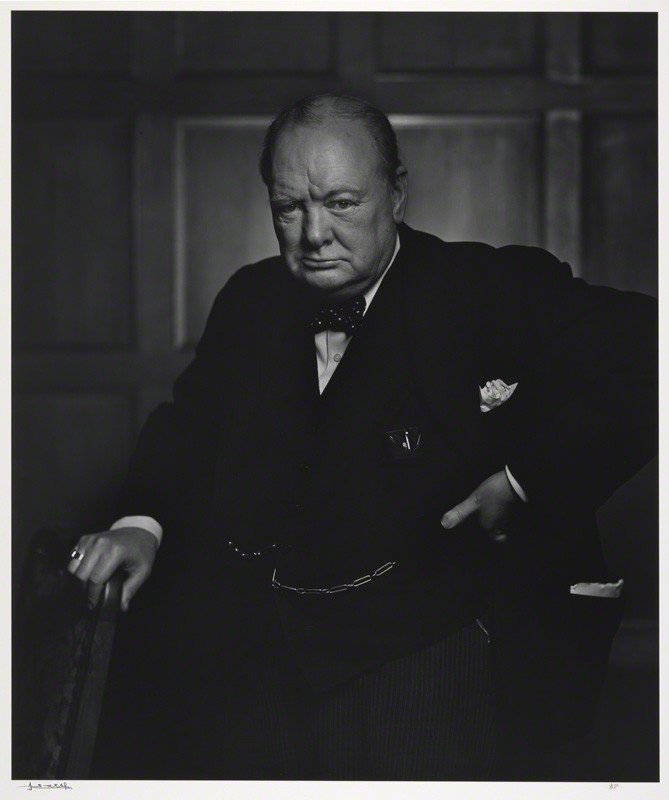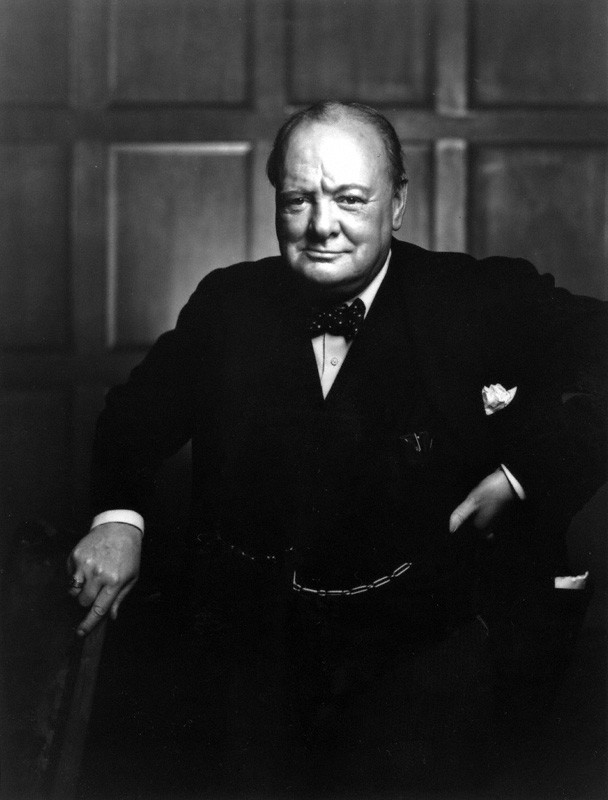December 23, 1908 – July 13, 2002
‘If it’s a likeness, alone, it’s not a success. If through my portraits, you can come to know the subjects more meaningfully, if it synthesises your feelings towards someone whose work has imprinted itself on your mind–if you see a photography and say, ‘Yes, this is the person,’ with a little new insight–that is a beautiful experience’
Notoriously harsh and tenacious, Prime Minister Winston Churchill earned a well deserved reputation as the ‘British Bulldog.’ Pictured above by Turkish born photographer Yousuf Karsh which became arguably one of the most famous portraits ever made as well as some saying the most reproduced image in history, taken in December 30th, 1941. This photograph propelled Karsh’s photographic career worldwide with the photograph of Winston Churchill becoming the front cover of LIFE magazine when WWII ended. In a 60 minute talk with Yousuf Karsh to Morley Safer in 1977 held in the Speaker Chamber, Ottawa where the famous shot was taken. A funny part to the story of the photograph is that the Canadian Prime Minister at the time almost set Karsh up by not informing Churchill he was to be photographed:
“I was invited by the late Prime Minster of Canada, William Lyon Mackenzie King, to come and listen to Mr Churchill first…. where I can watch his expressions, and ultimately that supreme moment came when he gave confidence to all his listeners. And when the great man came with the Prime Minster, I switched the light on and he immediately said, ‘What is going on’, I said, ‘Sir, I hope I would be fortunate enough to make a worthy photograph of you of this historic occasion. He banged at the table and said ‘Why was I not told!’….. The main thing was that the night before, I was already here, prepared my camera and lights right there. Now how to get Mr Churchill to walk all the distances, and to me it seemed like a very long distances….To date I still think it’s my greatest diplomatic triumph.
Karsh recounts in his book “Faces of Our Time,” how he managed to take this iconic shot:
‘My portrait of Winston Churchill changed my life. I knew after I had taken it that it was an important picture, but I could hardly have dreamed that it would become one of the most widely reproduced images in the history of photography…… He was in no mood for portraiture and two minutes were all that he would allow me as he passed from the House of Commons chamber to an anteroom. Two niggardly minutes in which I must try to put on film a man who had already written or inspired a library of books, baffled all his biographers, filled the world with his fame, and me, on this occasion, with dread. Churchill’s cigar was ever present. I held out an ashtray, but he would not dispose of it. I went back to my camera and made sure that everything was all right technically. I waited; he continued to chomp vigorously at his cigar. I waited. Then I stepped toward him and, without premeditation, but ever so respectfully, I said, “Forgive me, sir,” and plucked the cigar out of his mouth. By the time I got back to my camera, he looked so belligerent he could have devoured me. It was at that instant that I took the photograph.’
By Karsh making a brave gesture he managed to capture one of the nations most important leaders of the time. Although the photo above is the image from the shoot that would go on to become world famous, Karsh’s personal favorite portrait from the shoot is one captured later on, which shows Churchill with a lighter mood and a smile on his face: Churchill later went on to say to the photographer, “You can even make a roaring lion stand still to be photographed.” Thus, Karsh titled the photograph, “The Roaring Lion.”
Information: Boston Public Library










